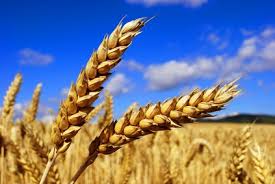Rome – Rules governing international trade of food and agricultural products should be crafted with an eye to improving countries’ food security and other development objectives. For this, a pragmatic approach that would align agricultural and trade policies at the national level is needed, a new FAO report argues.
The expected increase in global trade of farm products along with shifting patterns of trade and multiples sources of risks to global supplies will give trade and its governance a heightened influence over the extent and nature of food security everywhere. As a result, the challenge for policy makers has evolved into one of ensuring that its expansion “works for, and not against, the elimination of hunger, food insecurity and malnutrition,” according to The State of Agricultural Commodity Markets.
The new edition of this flagship FAO report aims to reduce the current polarization of views on agricultural trade, wherein some insist that free trade leads to more available and accessible food while others, noting the recent bout of volatile food prices, insist on the need for a more cautious approach to trade, including a variety of safeguards for developing countries.
Subtitled “Achieving a better balance between national priorities and the collective good,” the SOCO report emphasizes that the role of trade varies enormously with country characteristics, such as income, economic and landholding structure, the stage of agricultural development and the degree of integration of farmers in global value chains. Amid such variety in country conditions, international rules for formulating national trade policies should be supportive of efforts to mitigate disruptions that affect any of the four dimensions of food security: availability, access, utilization and stability.
Balancing short-run and long-run objectives is becoming vitally important considering that the nature of disruptions varies enormously and that market shocks will likely become more frequent due to geopolitical, weather and policy-induced uncertainties. While efforts to intervene and shield domestic markets from global price volatility could in fact lead to increased domestic price volatility, agricultural incentives play an important role in in boosting agricultural production and efficiency and fostering broader economic growth.
The global trade arena has changed notably in the past decade, with trade in food alone nearly tripling in value terms, driven in particular by fruits, vegetables, fish, meat and dairy products – all high-value categories where standards are typically more important than in staple commodities such as cereal grains.
On top of that, there are changes in economic geography. Latin America has become the largest net exporter of food, replacing North America, and ushering in a new political map of South-South trade flows. Meanwhile, regional trade agreements have proliferated, and while agricultural commodity imports tend to be dispersed among many countries, exports are concentrated in a few – such as Brazil with sugar, or the United States with coarse grains – which makes supply more vulnerable to sudden disruptions.
At the same time, new and subtler dynamics are increasingly driving trade patterns, including the emergence of global value chains and vertical integration within agricultural production and marketing. Such developments, wherein market power and standardization may matter as much as price, raise questions about the assumption of competitive markets and traditional efforts to harness comparative advantages, although participation in value chains also offer important income-generating opportunities to smallholder farmers.
The “supermarket revolution” in many developing countries is also changing the balance of opportunities and risks. On the one hand, retail chains often procure goods directly, shaking up habits as shown by the rapid halving of the market share of the top three banana-trading multinational companies from 70 percent in 2002 to 37 percent today. On the other hand, while supermarkets tend to benefit lower-income urban consumers, producers may suffer if they lack the ability to make investments necessary to meet volume, cost, quality and consistency standards.
The SOCO report offers a nuanced counterpoint to the often ideological clash between advocates of protected and open markets, which often stem from differences in the definitions of trade and food security. In reality, countries may seek to follow different strategies along the policy continuum from prioritizing own production towards relying on more open markets at different times in their development trajectory, depending on how their circumstances change over time.
Moreover, the distinction between formally protected and liberal markets often fades due to the way trade rules are actually implemented. For example, while least-developed countries (LDCs) have reserved the right to apply the highest import tariffs (the so-called “bound tariff rates”), followed by developing countries, with the lowest tariffs in developed countries, in reality there is almost no difference in the tariffs actually applied by the three groups.
Appropriate policies often depend on the extent to which national markets are developed and behave competitively and offer participants tools to manage risk. Where these conditions do not yet apply, “domestic support policies should not be rejected out of hand,” SOCO argues.
Mainstreaming food security – itself a function of multiple sectors of economies that change over time – into the trade policy decision-making process is a way to make trade an “enabler” of sustainable development and the core goal of eradicating hunger.
Prepared by: Sh. Kh.

